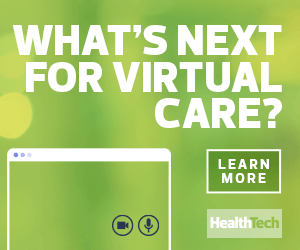Better Health and Savings
Telehealth is not new. Some commercial health plans had urged their members to adopt it for years because the practice saves money, primarily by diverting expensive emergency room visits. Prior to COVID-19, members were slow to embrace it, and a lack of uniform coverage across insurers and states stifled the movement. Now, it’s a way of life.
The pandemic also motivated the Centers for Medicare and Medicaid Services to take the unprecedented steps of encouraging state Medicaid programs to reimburse for telehealth services and expanding telehealth services for Medicare beneficiaries.
Personally, I believe virtual care would have seen faster adoption — and greater savings over time — if the innovation had started with this effort.
READ MORE: Learn four ways telehealth is changing healthcare consumer behavior for the better.
Why? Telehealth removes transportation barriers, supports evening and weekend appointments for hourly wage workers who can’t afford lost income, and can connect rural patients who often lag behind their urban peers in lifesaving screenings. It’s also critical for older adults who struggle with mobility or are at risk for readmission to hospitals.
Regardless of a patient’s background or ailment, having easy access to digital care can pay off — physically and financially.
How We Have to Move Forward
Right now, telehealth is more equitable than it has ever been. That’s great news, but more work must be done, including these five critical steps:
- Make temporarily relaxed telehealth regulations permanent. Video may be preferred for telehealth, but a phone call is better than no care. Medicaid, low-income and rural populations have less access to networks and devices that support video.
- Remove the Telephone Consumer Protection Act. Once intended to shield us from telemarketers, the outdated legislation prevents providers from texting patients — thus blocking the most common form of communication in the U.S., and a method that’s proven extremely effective in reaching low-income people.
- Make broadband an affordable utility, not a luxury. According to the United States Census Bureau, 36 percent of Black households and 30 percent of Hispanic households lack access to devices and broadband internet, furthering disparities in health outcomes and the life-improving opportunities of virtual care.
- Use savings generated by telehealth to provide health plan members with remote patient monitoring tools (a thermometer, blood pressure machine, a tablet, etc.) to accurately capture and send vitals as part of their ongoing digital care.
- Finally, design user experiences that work for everyone — including those with limited digital literacy. Seventeen steps to start a virtual visit is 15 steps too many. Beta test further and harder. Get feedback from non-native English speakers, seniors and people of color. Your product will be better for it.
If any good can come from this dark moment in our nation’s history, I hope it’s building a healthcare future that prioritizes equity and access for all people — and keeping those beliefs at the forefront as our industry evolves.











